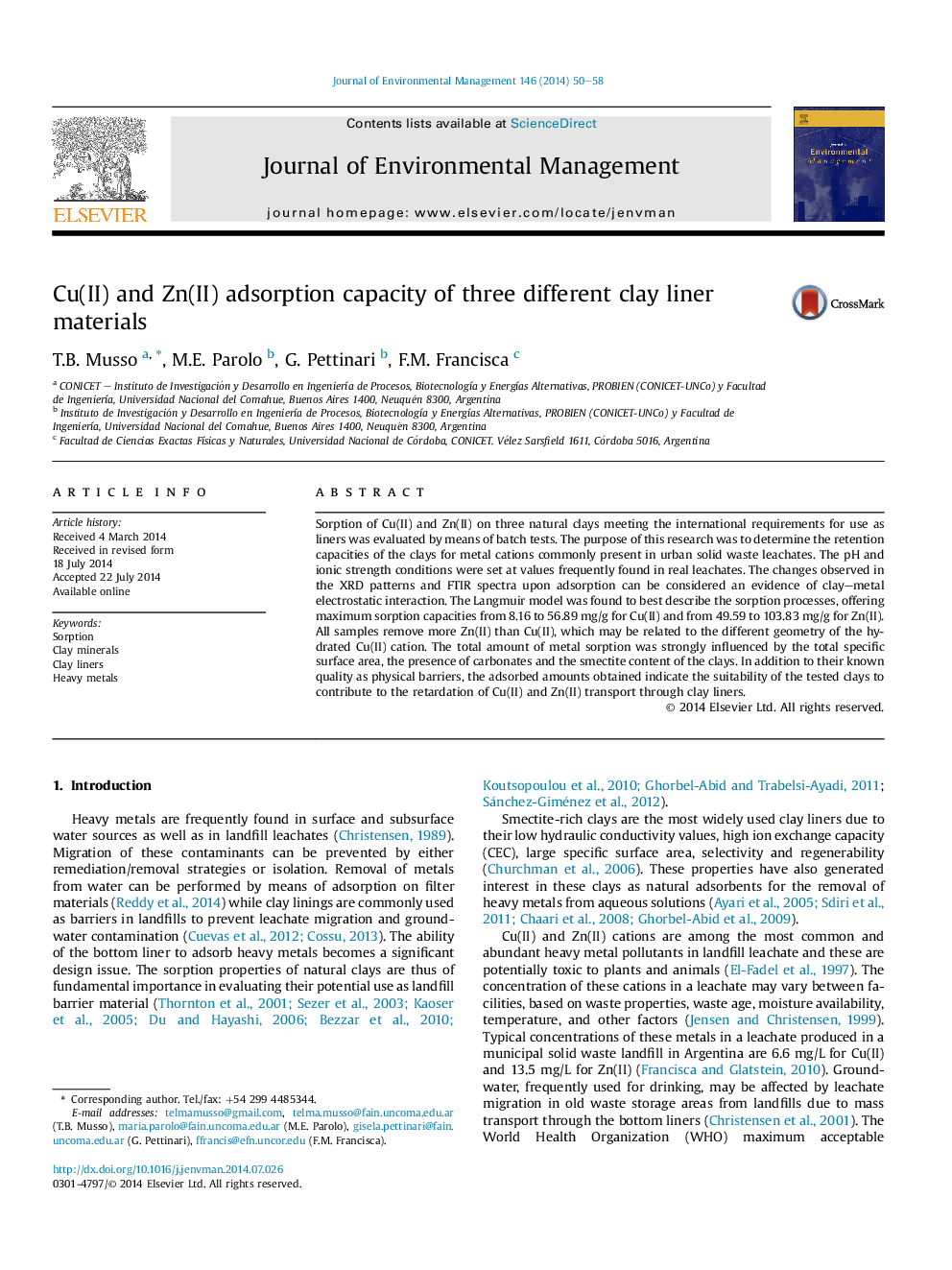| Article ID | Journal | Published Year | Pages | File Type |
|---|---|---|---|---|
| 7483350 | Journal of Environmental Management | 2014 | 9 Pages |
Abstract
Sorption of Cu(II) and Zn(II) on three natural clays meeting the international requirements for use as liners was evaluated by means of batch tests. The purpose of this research was to determine the retention capacities of the clays for metal cations commonly present in urban solid waste leachates. The pH and ionic strength conditions were set at values frequently found in real leachates. The changes observed in the XRD patterns and FTIR spectra upon adsorption can be considered an evidence of clay-metal electrostatic interaction. The Langmuir model was found to best describe the sorption processes, offering maximum sorption capacities from 8.16 to 56.89Â mg/g for Cu(II) and from 49.59 to 103.83Â mg/g for Zn(II). All samples remove more Zn(II) than Cu(II), which may be related to the different geometry of the hydrated Cu(II) cation. The total amount of metal sorption was strongly influenced by the total specific surface area, the presence of carbonates and the smectite content of the clays. In addition to their known quality as physical barriers, the adsorbed amounts obtained indicate the suitability of the tested clays to contribute to the retardation of Cu(II) and Zn(II) transport through clay liners.
Related Topics
Physical Sciences and Engineering
Energy
Renewable Energy, Sustainability and the Environment
Authors
T.B. Musso, M.E. Parolo, G. Pettinari, F.M. Francisca,
